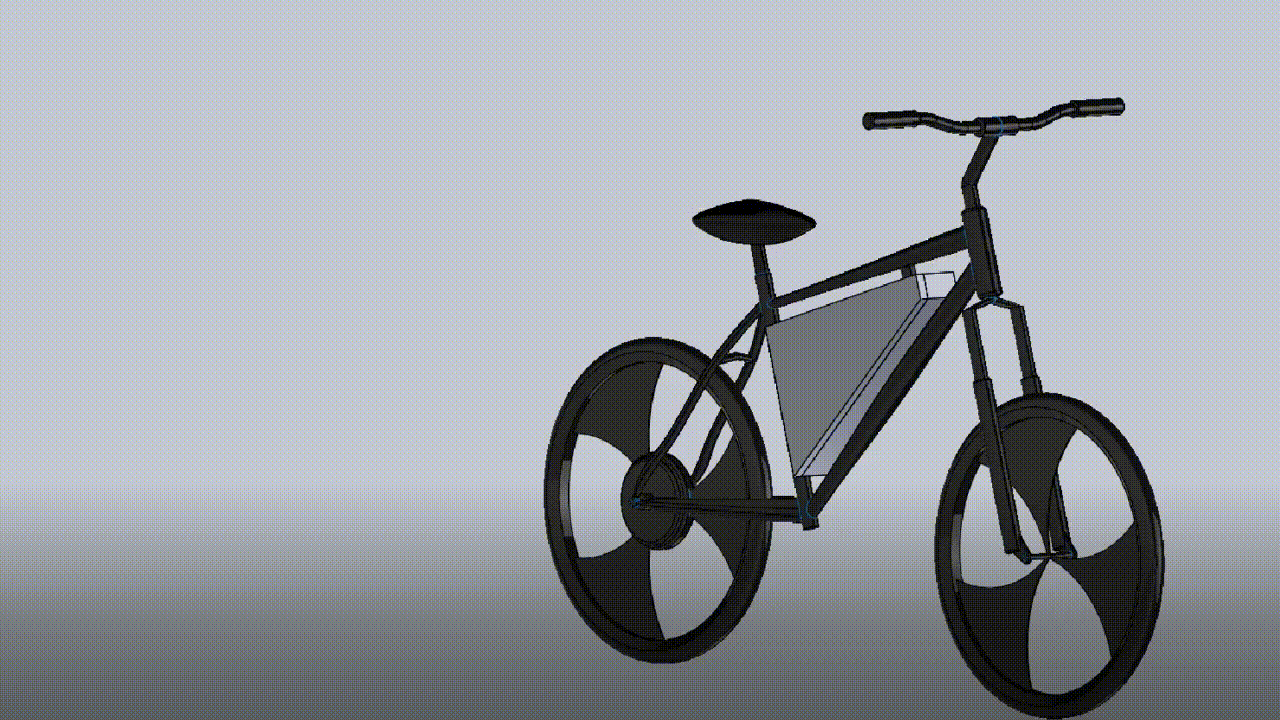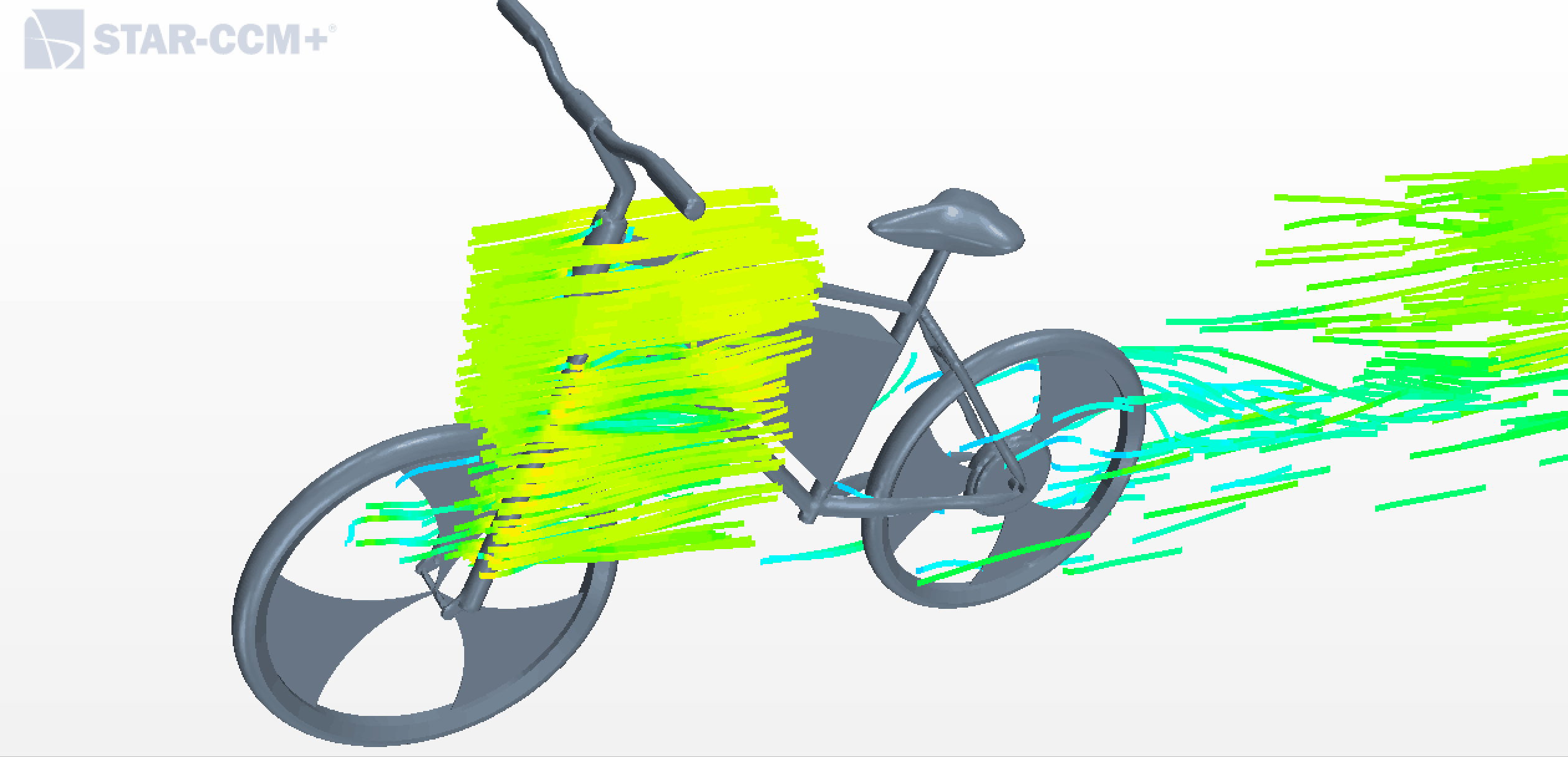The Electric Bike
In order to gain credibility and experience as the new leadership of the Electric Porsche Club, we are building a scaled down version of a lithium-ion powered Porsche with regenerative brakes: a lithium-ion powered bike with regenerative brakes. We wanted a high-speed bike that could handle off-road terrain, so we chose to design a system that could be installed on a mountain bike.
Once we completed the initial design process, we submitted a budget including a list of parts and their respective prices to the Cal Poly Mechanical Engineering Department for approval and funding. Our budget was approved and we bought the parts.
We have completed building the electric bike and are now designing a thermally stable and aerodynamic case to hold the battery pack and wiring. In order to refine this design, we created a simplified assembly of the mountain bike in Fusion 360 and simulated a three dimensional flow field around the model using STAR-CCM+.



While our technical knowledge of the software is still developing, both Braden and Patrick have spent significant time working together to understand the inner mechanisms of CFD and the iterative numerical methods that make it so powerful. The software is by no means a perfect simulation, but in conjunction with wind tunnel data, it can provide valuable information to flow behavior that cannot easily be seen or captured otherwise.
In this stage of our battery box design, CFD has been a valuable tool in order to understand the general flow around the bicycle and the forces on the undercarriage of the box. The bike is not an engineering marvel in terms of aerodynamics, and there are many contributions to drag that have not been simulated. However, our current belief is that a refined shape for the battery box will have a significant effect on high-speed stability and rider confidence.

